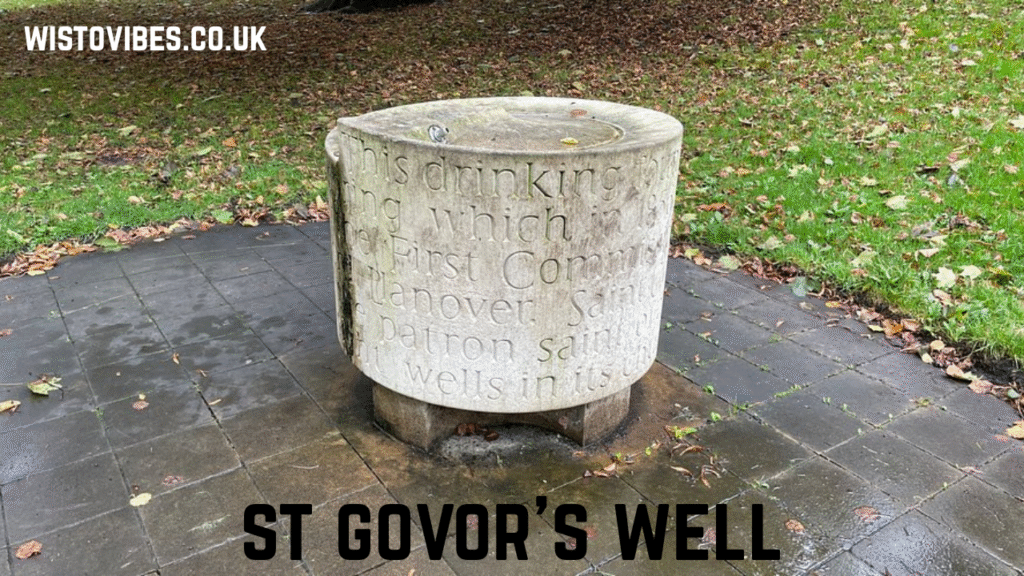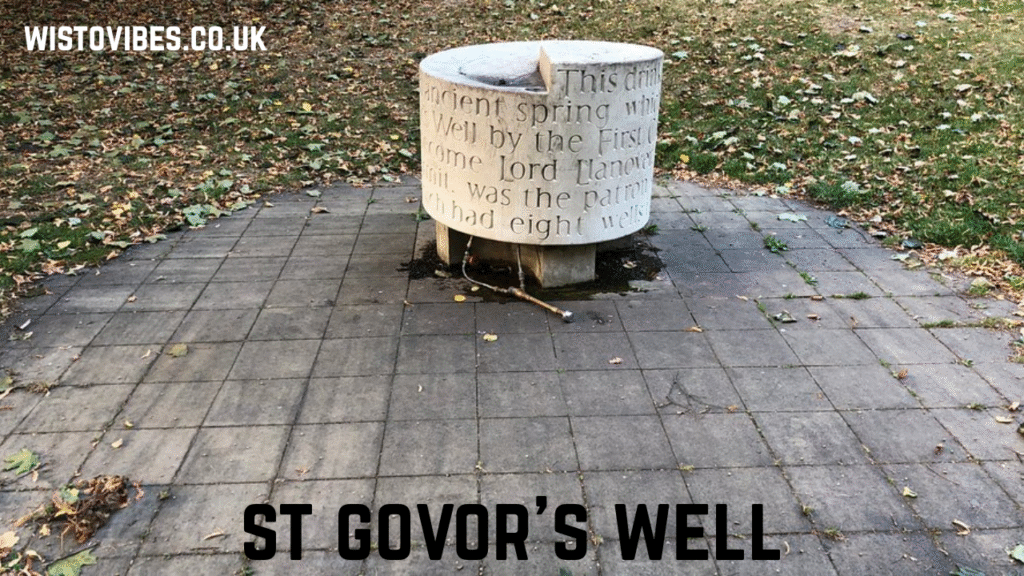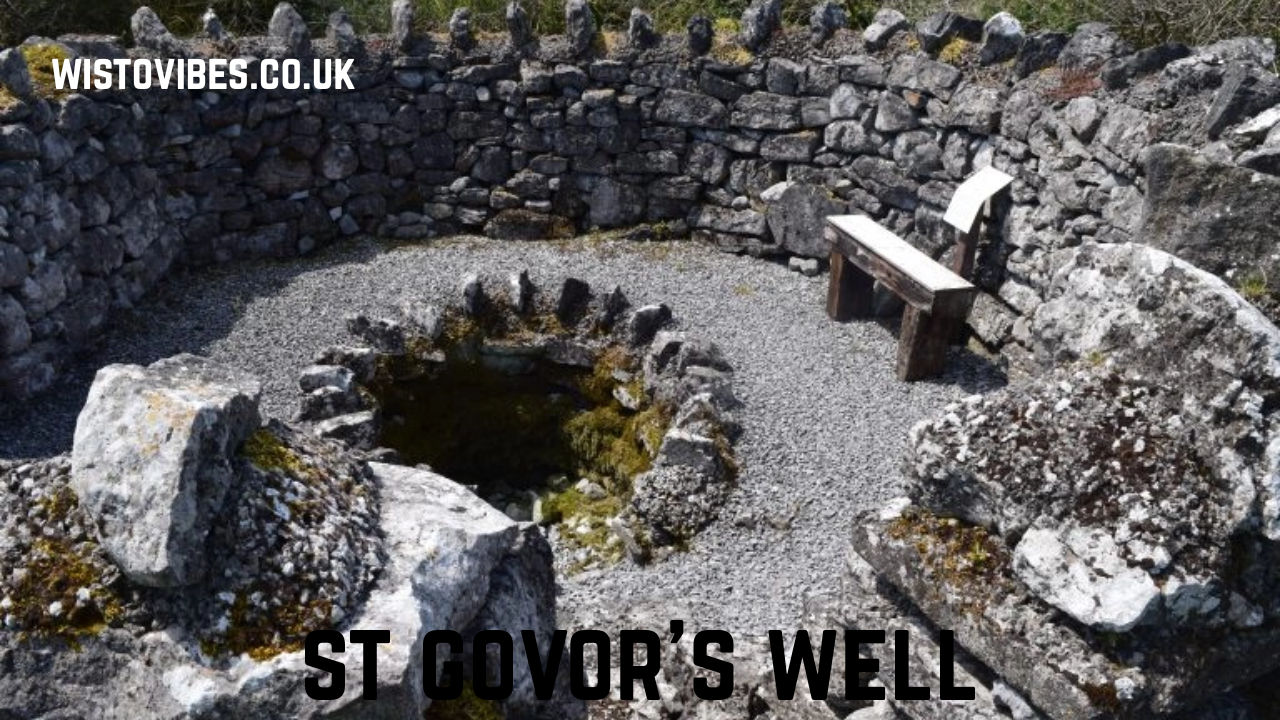St Govor’s Well has long captured the imagination of locals, historians, and travelers, standing as a reminder of the way ancient communities revered water as both a physical necessity and a spiritual symbol. The origins of St Govor’s Well are often described in old folklore, with references to a saintly figure named Govor, who is believed to have blessed the waters. In many cultures, wells are associated with miraculous powers, and St Govor’s Well is no exception. The surrounding landscape, often green and peaceful, adds to the aura of sacredness that has lingered for centuries. Scholars suggest the well may have been a pre-Christian sacred spring that was later given Christian associations to integrate it into local religious practices.
St Govor and the Sacred Waters

The name of the well is inseparably tied to St Govor, a figure who is said to have been a humble servant of faith and a healer of people. Stories passed down through oral traditions speak of St Govor praying at the site and using the water for blessings and cures. Though historical evidence about the saint is limited, the strength of the tradition highlights how communities used storytelling to preserve memory. The waters of St Govor’s Well were not only seen as refreshing but also spiritually purifying, believed to heal ailments of the body and soul. Such associations with holiness ensured the well became a gathering place for devotion and reflection.
Historical Context of Holy Wells
To understand the cultural place of St Govor’s Well, one must consider the broader history of holy wells across Europe. These wells were often aligned with early pagan traditions, where springs symbolized fertility, renewal, and the presence of divine forces. With the spread of Christianity, many such sites were rededicated to saints and woven into Christian folklore. St Govor’s Well fits perfectly within this pattern, suggesting that the sacredness of the location long preceded the naming of the saint. Communities in past centuries often built shrines, chapels, or small monuments around such wells, indicating the fusion of natural wonder with spiritual devotion.
The Healing Reputation of St Govor’s Well

One of the most consistent features of St Govor’s Well in folklore is its healing reputation. For centuries, people have traveled to drink or bathe in the waters, believing them to cure ailments ranging from fevers to blindness. Pilgrimages were often made during specific feast days, when crowds would gather for blessings. These healing claims, while not scientifically verifiable, played a crucial role in the survival of traditions. They gave people hope during times of hardship and linked health with faith in a tangible way. The reputation of the well also helped to preserve its importance when other cultural traditions faded.
Pilgrimages and Ritual Practices
St Govor’s Well was more than just a spring; it became a focal point for pilgrimages and rituals. People tied cloths to nearby trees, left offerings of coins, or lit candles in honor of St Govor’s spirit. Such practices combined Christian devotion with older folk traditions, creating a unique religious landscape. Annual gatherings turned the site into a space for community bonding, storytelling, and even festivals. The act of visiting the well was itself considered a ritual of cleansing and renewal, especially when performed in groups. For many, the pilgrimage was as much about spiritual healing as it was about physical wellness.
Folklore and Legends Around St Govor’s Well

The folklore of St Govor’s Well is filled with tales that mix history with myth. One legend tells of St Govor striking the ground with his staff, causing the water to spring forth miraculously. Another speaks of people who mocked the well and were punished with misfortune. These legends served as moral lessons, reinforcing the sacredness of the site and warning against irreverence. Folklore also often connected wells with hidden treasures, spirits, or guardians, and St Govor’s Well was sometimes described as being protected by divine forces that ensured its purity. These legends enriched the storytelling traditions of the region.
The Landscape and Setting of the Well
Part of the appeal of St Govor’s Well lies in its natural setting. Typically located in a quiet rural area, the well is surrounded by greenery, birdsong, and the serenity of nature. Such landscapes are inherently calming, and when paired with the belief in sacred waters, they create a space of profound peace. The setting makes the well both a place of pilgrimage and a retreat from everyday life. Visitors describe the atmosphere as contemplative, encouraging prayer, meditation, and reflection. The physical beauty of the area strengthens the impression that St Govor’s Well is a gift of nature imbued with divine blessings.
Transformation Through the Centuries
Over time, St Govor’s Well has gone through phases of reverence, neglect, and rediscovery. During medieval times, it was likely maintained by local communities or religious institutions. Later, as industrialization and urbanization spread, many such wells lost their prominence. Yet, folk memory kept the site alive, and in more recent years, heritage enthusiasts and spiritual seekers have renewed interest in the well. The cycles of decline and revival demonstrate the resilience of cultural traditions. Even when abandoned physically, St Govor’s Well remained alive in stories, songs, and local identity, ensuring that it was never completely forgotten.
Cultural Symbolism of St Govor’s Well
Culturally, St Govor’s Well symbolizes the intersection of faith, folklore, and nature. It embodies the way people once saw the world as filled with sacred places where divine presence could be felt. Wells, springs, and rivers often carried deeper meanings, acting as metaphors for spiritual nourishment and renewal. St Govor’s Well reflects the human need to attach meaning to natural resources, turning water into a symbol of healing and connection with the divine. It also stands as a cultural marker of the region, highlighting the stories, practices, and values of the people who cared for it.
The Spiritual Dimension of Water
Water has always held spiritual significance, and St Govor’s Well demonstrates this universal symbolism. In Christianity, water represents purification, baptism, and rebirth. In older traditions, it was linked to fertility and life itself. St Govor’s Well draws on these symbolic associations, reinforcing the idea that water connects the human body with the divine spirit. The act of drinking or touching the water becomes a ritual act, whether consciously religious or unconsciously spiritual. The well thus bridges physical and metaphysical worlds, offering more than just hydration but also a sense of sacred participation.
Stories of Cures and Miracles
Communities surrounding St Govor’s Well have long told stories of cures and miracles. Parents brought sick children to be blessed, travelers washed their eyes with the water for clarity, and farmers sought prosperity for their fields. While skeptics may dismiss such accounts, the persistence of these stories reveals the psychological and cultural importance of hope. Faith in miracles at St Govor’s Well gave people strength in times when medicine was limited and suffering was widespread. The tales became a shared narrative that reinforced community bonds and trust in divine compassion.
St Govor’s Well in Literature and Memory
The enduring appeal of St Govor’s Well is evident in its presence in local literature, poetry, and oral memory. Writers often used the well as a metaphor for purity, hope, and the continuity of tradition. Folk songs described the beauty of the waters and their connection to St Govor’s kindness. Such literary and cultural preservation ensures that even those who never visit the well can feel its importance. Memory plays a crucial role here, as each generation reinterprets the well’s meaning and adapts its significance to their own context, ensuring its survival in collective identity.
Conservation of St Govor’s Well
In modern times, efforts have been made to conserve sites like St Govor’s Well. Heritage organizations and local communities recognize the cultural and historical value of such wells and work to protect them from neglect or destruction. Conservation not only maintains the physical structure but also revives traditional practices, ensuring that rituals and stories continue to be passed down. St Govor’s Well, as part of a larger network of sacred springs, stands as a reminder of the importance of preserving cultural landscapes that hold both tangible and intangible heritage.
Tourism and Interest in Sacred Sites
Sacred wells like St Govor’s Well have become points of interest for cultural and spiritual tourism. Visitors come not only for religious reasons but also to experience the atmosphere of mystery and tradition. Tourists often seek authentic encounters with history, folklore, and nature, all of which the well provides. The growing interest in heritage tourism has allowed St Govor’s Well to regain visibility, drawing both scholars and casual visitors. Such renewed attention contributes to local economies while reinforcing the importance of protecting and promoting sacred traditions.
Symbol of Resilience and Continuity
St Govor’s Well can be seen as a symbol of resilience, surviving centuries of social, religious, and cultural change. Despite periods of obscurity, it has always resurfaced in collective memory, proving its enduring power. The well embodies continuity, linking generations through shared practices and beliefs. It reminds us that even as societies modernize, people continue to seek meaning in places that connect them to their ancestors. St Govor’s Well serves as both a literal and symbolic wellspring of cultural identity.
Modern Spiritual Practices at St Govor’s Well
Even today, visitors to St Govor’s Well often engage in spiritual practices that echo ancient traditions. People may light candles, whisper prayers, or simply sit in silence by the waters. The rituals may no longer carry the same communal weight as in past centuries, but they remain deeply personal acts of devotion. In this way, the well continues to serve as a living spiritual site, adapting to the needs of modern seekers. Its waters still inspire reflection, offering a reminder of the sacred in everyday life.
St Govor’s Well and Environmental Awareness
The sacredness of St Govor’s Well also resonates with modern ideas of environmental protection. Wells and springs are fragile ecosystems that require careful stewardship. By viewing the well as sacred, communities implicitly recognize the importance of preserving clean water sources. In today’s world, where water scarcity and pollution are global issues, St Govor’s Well can inspire a renewed respect for natural resources. Its symbolic importance aligns with ecological awareness, showing how ancient traditions can guide modern values of sustainability.
The Legacy of St Govor’s Well in Local Identity
St Govor’s Well is more than just a spring; it is a cornerstone of local identity. Generations of families have grown up hearing stories of its powers, visiting it during pilgrimages, or recalling its presence in daily life. The well continues to anchor community memory, acting as a shared heritage that unites people across time. It is celebrated in local festivals, remembered in family histories, and passed on in the voices of elders. The legacy of St Govor’s Well remains strong, reinforcing the value of tradition and the endurance of cultural memory.
Conclusion and FAQs about St Govor’s Well
What is St Govor’s Well known for?
St Govor’s Well is known for its sacred waters, which are believed to have healing and purifying powers, as well as its deep roots in folklore and tradition.
Who was St Govor?
St Govor is remembered as a saintly figure associated with healing, prayer, and blessings, whose name became tied to the well.
What traditions are practiced at St Govor’s Well?
Visitors historically tied cloths to trees, offered coins, and participated in communal pilgrimages, many of which still inspire modern practices.
Is St Govor’s Well still visited today?
Yes, it continues to attract pilgrims, tourists, and heritage enthusiasts who are drawn by its history, legends, and serene atmosphere.
Why is St Govor’s Well important?
The well is important not only as a religious site but also as a cultural landmark, symbolizing resilience, continuity, and respect for nature.
Read More: Understanding mechans History Concepts Applications and Future Perspectives




